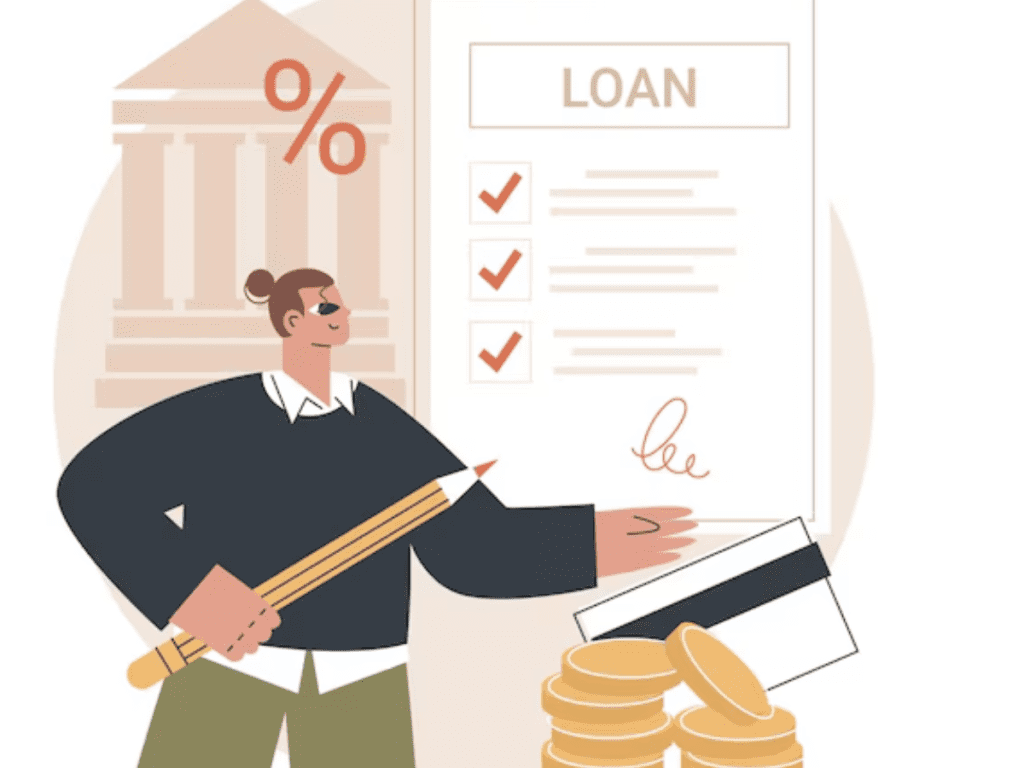Introduction
When it comes to borrowing money, one of the most important aspects to consider is the type of interest rate that will apply to your loan. Personal loans, which are frequently utilized for any number of purposes like debt consolidation, financing a home improvement project, or paying for unexpected expenses, usually carry either a fixed or variable interest rate. Familiarizing yourself with the primary distinctions between the two interest rate options can enable you to make a more knowledgeable choice based on your financial objectives, individual needs, and tolerance for risk.
Here we will discuss in detail both variable and fixed interest rates, where we will address the pros and cons of using each of these options, and finally assist you in deciding whether a fixed interest rate or variable interest rate suits your personal loan best.
What is a Fixed Interest Rate?
A fixed interest rate is an interest rate that the rate charged on your loan does not change throughout the loan period. With this kind of loan, your rate of interest and monthly payment will remain the same, irrespective of the movement of the market. This implies that you can reliably budget your monthly expenditure, as you will know precisely what you will be paying each month.
Benefits of Fixed Interest Rates
- Predictability
One of the primary advantages of a fixed interest rate is that it is predictable. As the rate is locked in for the term of the loan, you can quickly determine your monthly payments and how much you will pay on the loan over its term. It is simpler to budget your money, as you will not have to worry about being hit with higher payments if market rates increase. - Protection from Interest Rate Hikes
When you fix a rate, you are shielded from any future interest rate hikes that might take place. This can be especially useful in a rising interest rate scenario, as it enables you to sidestep higher payments that would be the consequence of rising market rates. - Fixed Loan Costs
Fixed interest rates offer the benefit of knowing precisely how much your loan will set you back in total. With both the payment and the interest rate fixed, you will know your financial obligation upfront. This certainty can be particularly significant for long-term loans, where the risk of fluctuating rates can mean enormous hikes in overall costs. - Best for Long-Term Borrowers
In case you borrow money with a long term of repayment, like a mortgage or auto loan, a fixed rate would be preferable. This is due to the fact that tying the rate to a long term can give you peace of mind knowing that your payment remains constant in the long run.
Disadvantages of Fixed Interest Rates
- Higher Initial Interest Rates
Fixed-rate loans tend to have higher interest rates than their variable equivalents, particularly in the initial terms of the loan. Lenders pay a premium for the security of giving you a fixed rate, so you could potentially pay more in the short term than you would with a variable rate loan. - Limited Flexibility
Though a fixed rate is certain, it carries less flexibility with it. You won’t have the advantage of reduced rates should interest rates decrease in the marketplace. That would mean you pay more if you take advantage of a fixed rate when rates in the marketplace are high and, later on, interest rates reduce. - Refinancing Might Be Necessary
If interest rates fall considerably after you have secured a fixed rate, you might find yourself wishing to refinance your loan in order to enjoy lower rates. Refinancing, though, tends to include extra fees and paperwork, and is not always an option available to you, depending on your finances.
What is a Variable Interest Rate?
A variable interest rate, conversely, is a rate that fluctuates over time according to the market. The rate is normally linked to an index or benchmark, e.g., the repo rate or LIBOR (London Interbank Offered Rate), and will vary as these base rates move up or down. Consequently, your monthly installment will go up or down in accordance with a change in the interest rate.
Benefits of Variable Interest Rates
- Lower Initial Rates
One of the main benefits of a variable interest rate is that it usually begins lower than a fixed one. Because variable rates are generally tied to a benchmark rate, which can be lower than fixed rates, you might pay less interest in the beginning of your loan. That can be desirable if you desire to lower your initial borrowing charges. - Room for Reductions in Interest Rates
When interest rates fall in the market, your loan’s interest rate and monthly payment will tend to decline as well. This implies that you may save money on the total cost of borrowing if the market interest rates fall, with lower monthly payments and less total borrowing cost. - Short-Term Borrowers Gain
If you intend to repay the loan fairly soon or refinance it in a few years, an adjustable interest rate might be a good option. The lower initial interest rate might save you money in the initial years of the loan, before rates have time to rise substantially. - Flexibility
Because variable interest rates are anchored to market levels, they offer greater flexibility compared to fixed-rate loans. If the market is favorable, you may enjoy reduced rates without refinancing or renegotiating your loan. This presents an opportunity to settle your loan in a shorter time while minimizing interest expenses.
Disadvantages of Variable Interest Rates
- Uncertainty
The biggest drawback of a variable interest rate is unpredictability. Because the rate can change, your monthly payment can change too. This will cause your payments to increase unexpectedly if interest rates go up, which can be hard to plan and budget for future costs. - Higher Payments When Interest Rates Increase
If the market interest rates increase, your payments will probably also increase. This may mean paying more for your loan over time, particularly if interest rates significantly increase. If you cannot afford increased payments, this may cause financial strain and even default. - Risk of Increased Long-Term Expenses
Whereas a variable rate might be lower at the outset, it could end up being more expensive overall if interest rates rise substantially. If market rates climb steadily over time, you could end up paying more total for the loan than you would have with a fixed-rate loan. This is worth keeping in mind if you want to reduce your long-term debt burden.
Fixed vs. Variable Interest Rates: Which One Should You Choose?
When deciding between a fixed or variable interest rate for your personal loan, the choice ultimately depends on your financial situation, your goals, and your risk tolerance. Here are some factors to consider:
When to Choose a Fixed Interest Rate
- If You Want Stability
A fixed interest rate is perfect if you like the security of knowing precisely how much your monthly payments will be. It’s the best choice for those who are risk-averse and don’t want to take the chance of payment variation. - If Interest Rates Are Low
If interest rates are low at the time of taking your loan, it can be a good idea to lock in a fixed rate. You shield yourself against potential future increases in rates and may save yourself a lot of money over the life of your loan. - If You Have a Long-Term Loan
Fixed interest rates are especially useful for long-term loans, like car loans or mortgages. If you have a loan that will last many years, a fixed rate can provide assurance that your payments will be the same amount every month.
When to Select a Variable Interest Rate
- If You Can Manage Some Risk
If you don’t mind the unpredictability that comes with changing interest rates, a variable interest rate could be suitable. This would be best for individuals who are willing to take the risk of lower rates but are also willing to take the risk of increased rates in the future. - If You Plan to Pay Off the Loan Quickly
If you plan to pay off your loan within a comparatively short time span or refinance it in the near future, a variable rate of interest will assist you in saving on interest charges in the early years of the loan. - If You Expect Interest Rates to Stay Low or Decrease
If you expect interest rates in the market to stay low or go down, a variable interest rate might be for you. By securing a low initial rate, you might enjoy lower payments and lower overall costs throughout the life of the loan.
Conclusion: Which One is Better for You?
There is no one-size-fits-all solution when deciding between a fixed or variable interest rate. Your best option depends on your individual preferences, financial needs, and objectives. If you prefer stability and do not want to risk varying payments, a fixed interest rate could be the appropriate option. Nevertheless, if you are willing to accept some uncertainty and wish to benefit from potentially cheaper rates in the future, a variable interest rate could prove to be a money saver.
In the end, the choice is your preference for the likelihood of higher payments versus the hope of lower rates. With an understanding of the advantages and disadvantages of both possibilities, you are better equipped to make an informed choice that is in keeping with your economic goals.

